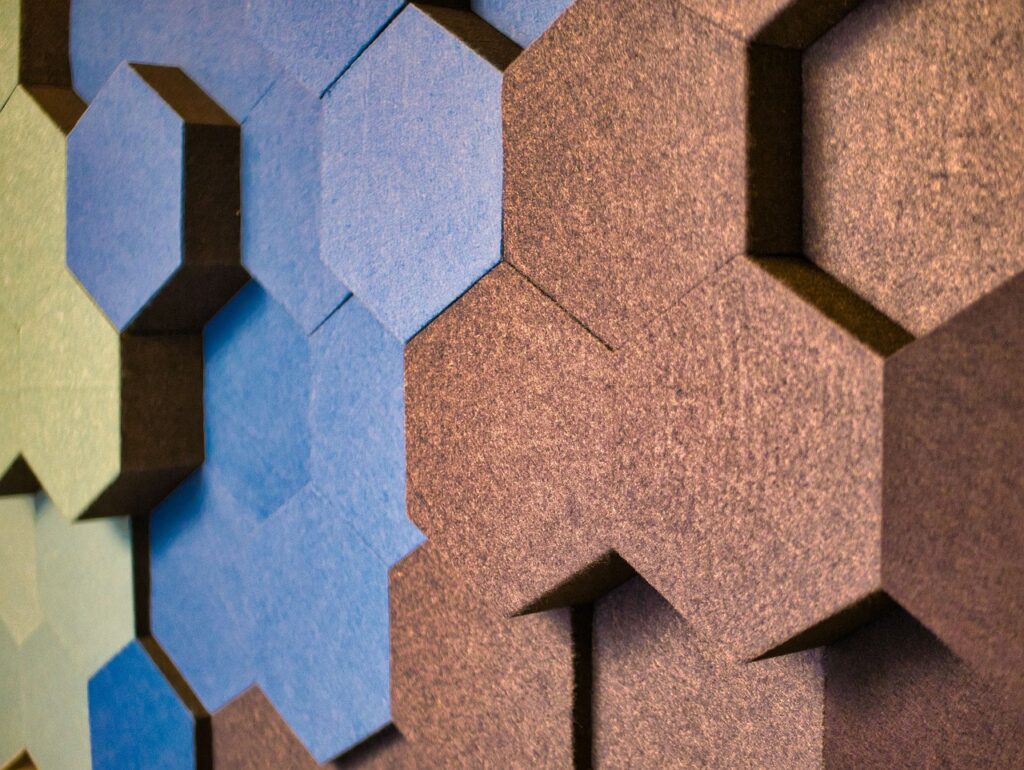There really is a need to soundproof your garage. Really.
Garages are often more than just places to store cars. Many people use their garages as workshops, studios, rehearsal spaces, or home gyms. These functions often generate noise that can disturb the peace inside the house or the quiet of the neighborhood. Soundproofing your garage not only ensures privacy and comfort but also helps you avoid complaints from neighbors and household disruptions.
The materials and methods used in soundproofing a garage can make a big difference in how effectively you reduce noise transmission.
Recognizing Common Noise Sources
Before you begin soundproofing, it is important to identify where the noise originates. Power tools, musical instruments, workout equipment, and even loud conversations can produce vibrations and sound waves that travel through walls, floors, and ceilings. Garage doors and windows can also leak sound if they are not insulated properly. Understanding these sources helps you target your soundproofing strategies for the best possible outcome.
Planning Your Soundproofing Strategy
A well-executed soundproofing plan starts with identifying weak spots in your garage’s structure. These include walls, ceilings, floors, windows, and doors. Sound travels easily through gaps and lightweight materials. Focus on creating barriers that absorb and block sound. Consider whether you need to soundproof the entire garage or only specific areas, such as a wall that borders a neighbor’s property or a door that leads into your home.
Soundproofing the Garage Walls
The walls of your garage are one of the most important areas to treat. Interior walls made from drywall or thin wood panels allow sound to pass easily. Adding mass to these walls can significantly reduce sound transmission. Consider using dense materials such as insulation board, mass loaded vinyl, or layers of drywall to add thickness and reduce noise. Installing acoustic panels can also help absorb sound and prevent echoing inside the garage.
Treating the Garage Ceiling
Noise often escapes through the ceiling, especially if there is a room directly above the garage. Adding insulation between ceiling joists is a good first step. Fiberglass or foam insulation works well in absorbing sound. A suspended ceiling with acoustic tiles or an additional layer of drywall below the existing ceiling can enhance the barrier effect. Ensuring a tight seal between ceiling materials also helps reduce sound leaks.
Insulating the Garage Floor
Sound can reflect off hard surfaces such as concrete floors. Installing rubber mats, carpets, or thick foam tiles helps reduce noise bounce and impact vibrations. These coverings are particularly useful if you use heavy tools or gym equipment. Floor insulation may not block sound as much as wall and ceiling treatments, but it plays a role in overall noise reduction and comfort.
Sealing Garage Doors and Windows
Garage doors and windows are often overlooked in soundproofing efforts. Most garage doors are made from metal or lightweight materials that transmit sound easily. Adding insulation panels to the interior side of the garage door helps block noise. Using weatherstripping around the door frame seals gaps where sound can escape. Windows can be double glazed or covered with heavy curtains to reduce noise penetration. Any cracks around the frames should be sealed with acoustic caulk to ensure maximum sound isolation.
Choosing the Right Soundproofing Materials
Not all soundproofing materials are created equal. Some are designed to absorb sound, while others block or dampen it. Materials such as mass loaded vinyl are excellent for blocking low frequency noise. Acoustic foam works well for absorbing high frequency sounds and reducing echoes. Combining different types of materials gives you broader noise control. Make sure to select products that are compatible with your garage’s structural materials and usage.
Addressing Air Vents and Electrical Outlets
Sound often finds its way through small openings that are difficult to see. Air vents, electrical outlets, and light fixtures can become unexpected pathways for noise. To address these areas, install acoustic covers or use foam inserts that do not block airflow but reduce sound leakage. For electrical outlets, use insulation pads behind the covers. Sealing around these fixtures with acoustic sealant enhances your sound barrier.
Creating a Double Wall System
If your garage doubles as a music room or recording studio, a double wall system offers a high level of soundproofing. This method involves building a second wall inside the existing one, creating an air gap that absorbs and disrupts sound waves. The result is reduced vibration transfer and significantly lower noise levels outside the garage. Although more labor intensive, this approach is effective for users who require strong sound isolation.
Upgrading Interior Finishes
Simple upgrades to your interior finishes can have a significant impact on noise control. Adding thick rugs, wall hangings, or foam panels softens reflective surfaces and reduces echo. Furniture, shelves, and storage units along walls also contribute to sound absorption. These changes not only improve acoustics but also enhance the overall look and function of your garage space.
Using Soundproof Curtains or Blankets
Heavy fabric materials such as soundproof curtains or blankets can be used to cover doors, windows, or walls. These items are often portable and flexible, making them ideal for temporary setups. They are particularly useful in situations where permanent structural changes are not possible. Choose options that are specifically designed for sound control to maximize their effectiveness.
Creating a Soundproof Room Within a Room
If your garage is used frequently for noisy activities, you might consider building a soundproof room within the space. This inner room can be constructed with sound isolating materials and features independent walls, ceilings, and floors. The separation between the structures minimizes vibration transfer. This setup is commonly used in professional recording studios and can be adapted for home use if needed.
Maintaining Ventilation and Airflow
Soundproofing should not compromise the air quality inside your garage. When sealing windows and doors or adding insulation, ensure that the space remains well ventilated. Soundproof vents or air exchange systems can help maintain airflow without sacrificing noise control. These systems are designed to reduce sound transfer while allowing fresh air to circulate freely.
Testing the Effectiveness of Your Setup
Once your soundproofing measures are in place, take time to test their effectiveness. Play music, use tools, or conduct typical activities while checking the sound levels inside and outside the garage. You can use a decibel meter to measure the difference. Identifying areas where sound still escapes allows you to make targeted improvements for even better results.
Balancing Budget and Performance
Soundproofing projects can vary in cost depending on materials and labor. Some methods, such as using rugs and curtains, are affordable and easy to implement. Others, like double wall systems or complete room builds, require a larger investment. Choose solutions that match your soundproofing needs and budget. A layered approach using a mix of techniques often delivers the best return on investment.
Involving a Professional Installer
If your garage soundproofing goals are ambitious or involve structural changes, consulting with a contractor or acoustic professional can save time and resources. These experts can recommend materials, assess the space, and ensure that installations meet building codes and safety standards. Their experience helps you avoid costly mistakes and achieve optimal results.
Adapting Soundproofing Over Time
Your garage use may evolve, and so should your soundproofing approach. If you shift from woodworking to music production, your noise levels and frequencies change. Periodically review your setup and adjust materials and treatments as needed. This flexibility ensures that your garage remains a functional and quiet environment.
Exploring Modern Acoustic Technologies
Advances in acoustic engineering have made new soundproofing materials more accessible and effective. Products such as vibration dampening compounds, sound isolating clips, and acoustic drywall provide more options for tailored noise control. Staying updated on the latest technologies allows you to enhance your soundproofing system with minimal effort.
Enhancing Comfort Along With Silence
Soundproofing improves more than just acoustics. A well insulated garage also stays warmer in winter and cooler in summer. Reduced noise levels contribute to mental focus, better sleep, and more enjoyable activities. These comfort benefits add value to your home and improve daily living for everyone in the household.
Protecting Property and Relationships
A quiet garage preserves the peace between neighbors, prevents noise complaints, and avoids potential legal issues in some residential areas. Protecting your property value and relationships within the community is just as important as enjoying your space. Soundproofing supports both goals by making your garage less disruptive to the outside world.
Preserving the Long Term Investment
Soundproofing a garage represents a lasting improvement. Once installed, most treatments require minimal maintenance and continue to provide benefits for years. As with any home upgrade, attention to detail and quality materials ensure that your investment remains effective and adds value to your property.
Conclusion
Creating a quiet and functional garage space is entirely achievable with the right planning and materials. Soundproofing addresses both comfort and responsibility. A well soundproofed garage allows you to work, play, or relax without disrupting others or being disturbed. Whether you are a musician, mechanic, or hobbyist, taking steps to reduce noise makes your garage a more enjoyable and efficient place to spend time.

